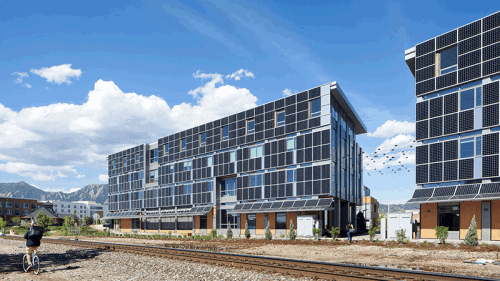ULI MEMBER–ONLY CONTENT: As other segments of the real estate business adjust to challenges presented by the COVID-19 pandemic and economic recession, the industrial sector is looking to capitalize on greater demand for its facilities resulting from the explosion of e-commerce, panelists said at a Trends and Outlooks session during the 2020 ULI Virtual Fall Meeting.
Franz Colloredo-Mansfeld, a member of ULI’s American Executive Committee and president and chief executive officer of Cabot Properties, a Boston-based private equity real estate investment firm, noted that the industrial sector is “somewhat immune” to the downturn affecting other sectors.
“The e-commerce demand has been unbelievable,” he said. “I do worry about the continued uncertainty. I do worry about the impact of this virus on our families, on our employees, on our tenants. We’re certainly not celebrating by any measure, but we are cautiously optimistic that some of the long-tail trends that have been in place for years will continue and some of them, in fact, in an accelerated way.”
Patricia Gibson, chief executive officer Banner Oak Capital Partners and panel moderator agreed. “From a fundamental perspective, everything feels like it’s going on all cylinders,” she said. However, she noted some red flags. “The cautionary part is just the flood of capital that’s coming into the space and new entrants that perhaps shouldn’t be in the space—creating oversupply or pricing that doesn’t make sense. That’s going to make it difficult for all of us and maybe get us out of sync.”
The rise and acceleration in adoption of e-commerce this year has been dramatic, said Damon Austin, managing director, capital deployment, West region, for logistics giant Prologis. From representing under 10 percent of all retail sales in 2010, e-commerce had climbed into the mid-teens before the pandemic changed markets earlier this year. Prologis now estimates that e-commerce constitutes more than 25 percent of total retail sales, though he said some research reports have placed the figure much higher.
“How many years of demand did we just pull forward in a six-, nine-month accelerated time frame?” he mused. “It’s pretty remarkable, and it’s really a fundamental shift in the way we look at space, because we think that to go from brick-and-mortar retail to e-commerce and fulfillment—that requires three times the amount of space.”
Colloredo-Mansfeld and Austin see a particular opportunity in the sector related to increased online grocery sales, which has been accompanied by improved technology for cold storage. Companies specializing in cold storage are “coining money, and it’s turned into this huge opportunity,” Colloredo-Mansfield said.
“I think online grocery and food service is without a doubt going to be growing at a completely new trajectory in the post-COVID world,” Austin said. “And I think we’re going to have to adapt to figure out how that affects our day-to-day business.”
From a broader perspective, Austin expects the industry to follow customers and businesses as they move from center cities to outer rings, focusing less on distribution hubs in the inner ring of cities—where it is hard to find or entitle property for industrial use—and more on multiple urban infill hubs in second- or third-ring areas. “It’s less about a single bullet right in the center of Manhattan, right in the center of San Francisco, and maybe thinking about it a little more holistically, for where the consumption pockets are,” he said.
That scattering of hubs will play into the industrial sector’s increased emphasis on environmental concerns. Use of regional hubs and having logistics centers near consumption centers is going to have a positive impact on sustainability by reducing vehicle-miles traveled, Austin said.
He noted that though Prologis has focused on reducing its carbon footprint through the use of low-carbon-footprint materials in construction and is considering construction of its first facility using cross-laminated timber, most of the sustainability initiative in the sector comes from the customer. As an example, he cited Amazon’s plan to be net-zero carbon in its operations by 2040, in part through use of electric vehicles.
Michael Collins, managing director, public finance and health care, at Kansas City, Missouri–based JE Dunn Capital Partners, agreed.
“The companies that are coming from California are demanding it from companies, from areas where they want to be,” he said. “So they’re pushing different markets that are not necessarily the tier-one markets—pushing them from a policy standpoint, to go in and say, ‘This is what we’ve done in L.A., the Inland Empire, and this is what we want to see in a different market.’ We’re seeing that shift from the customer.”
JAMES MULLIGAN is senior editor at the Urban Land Institute.


